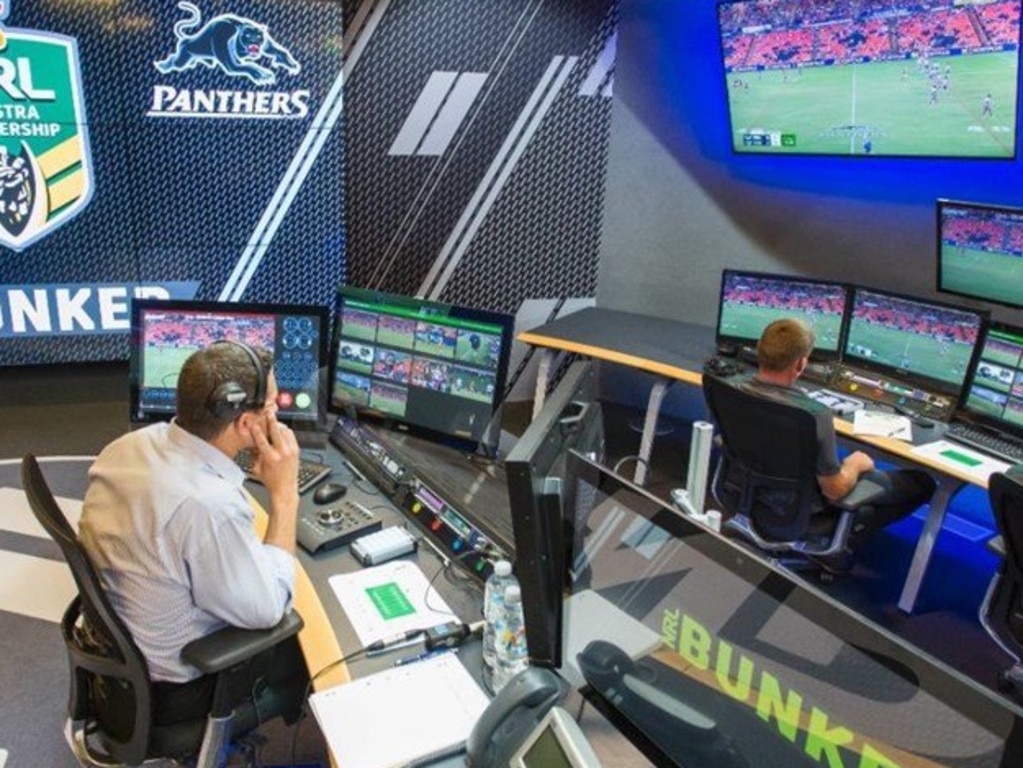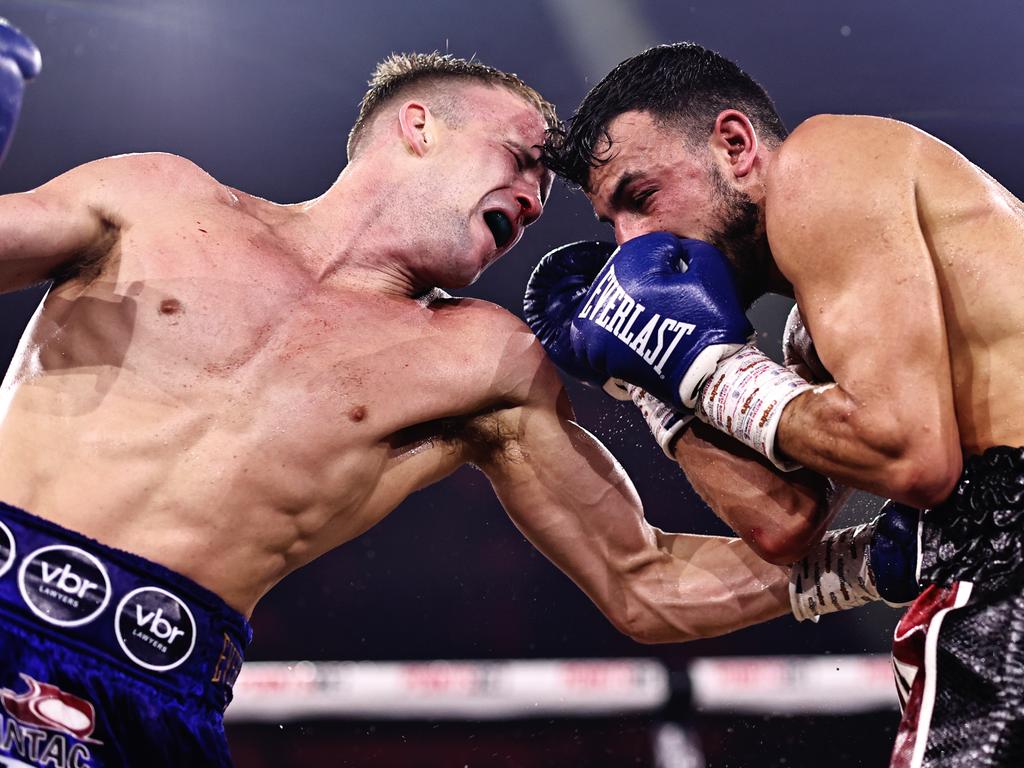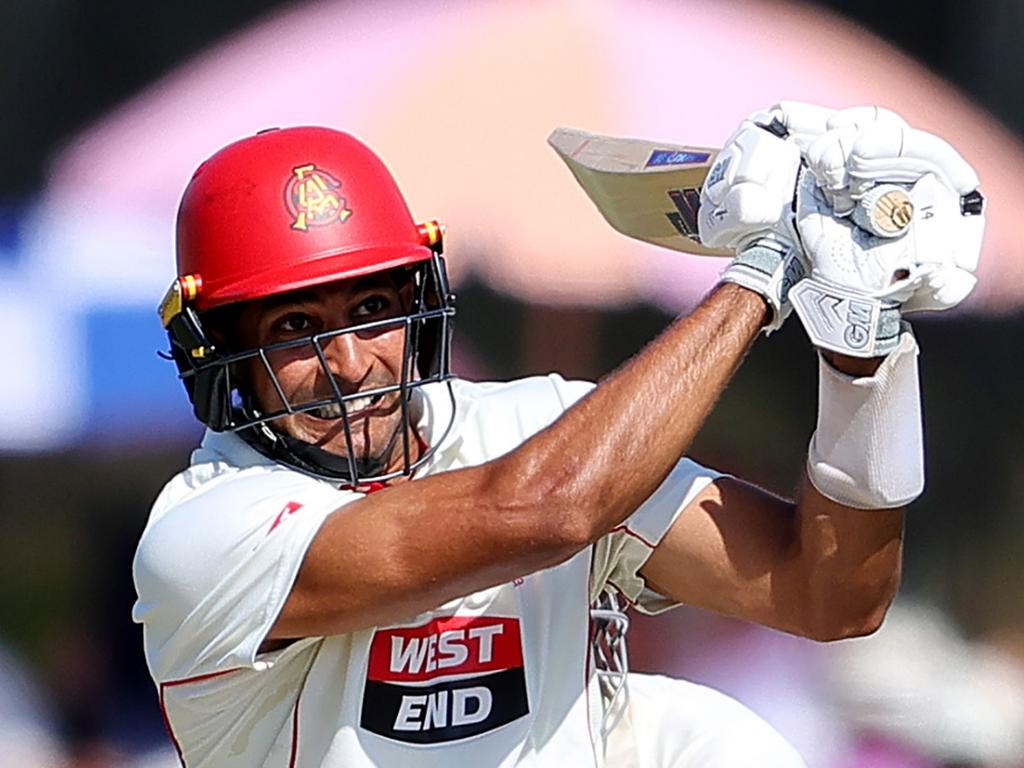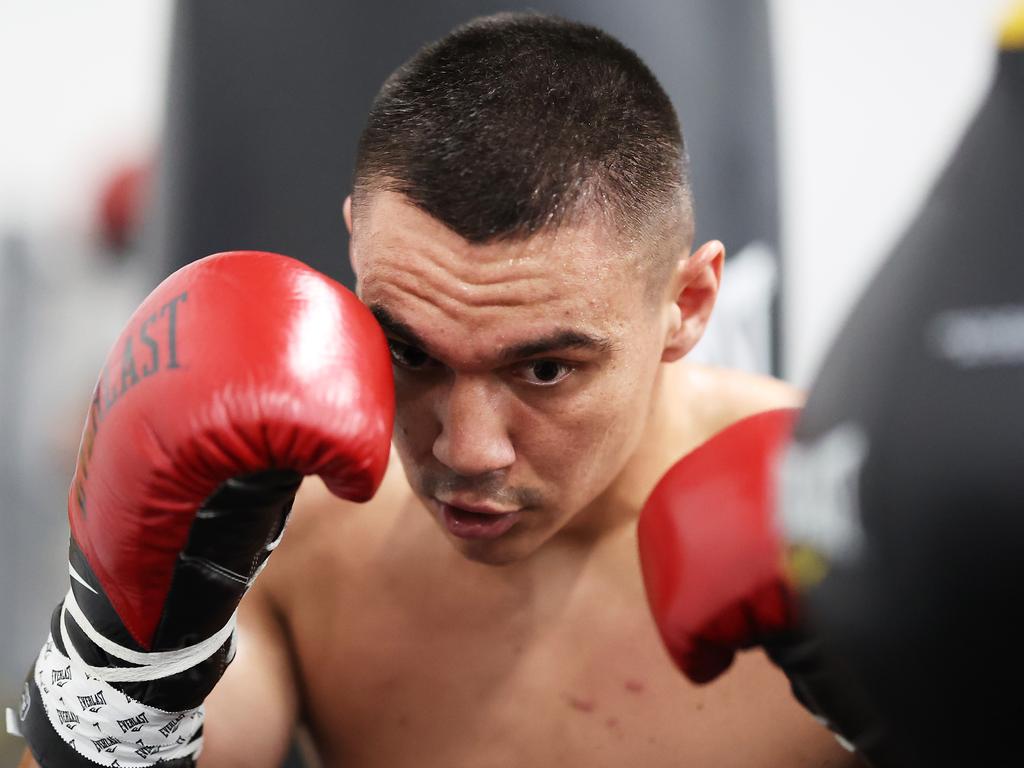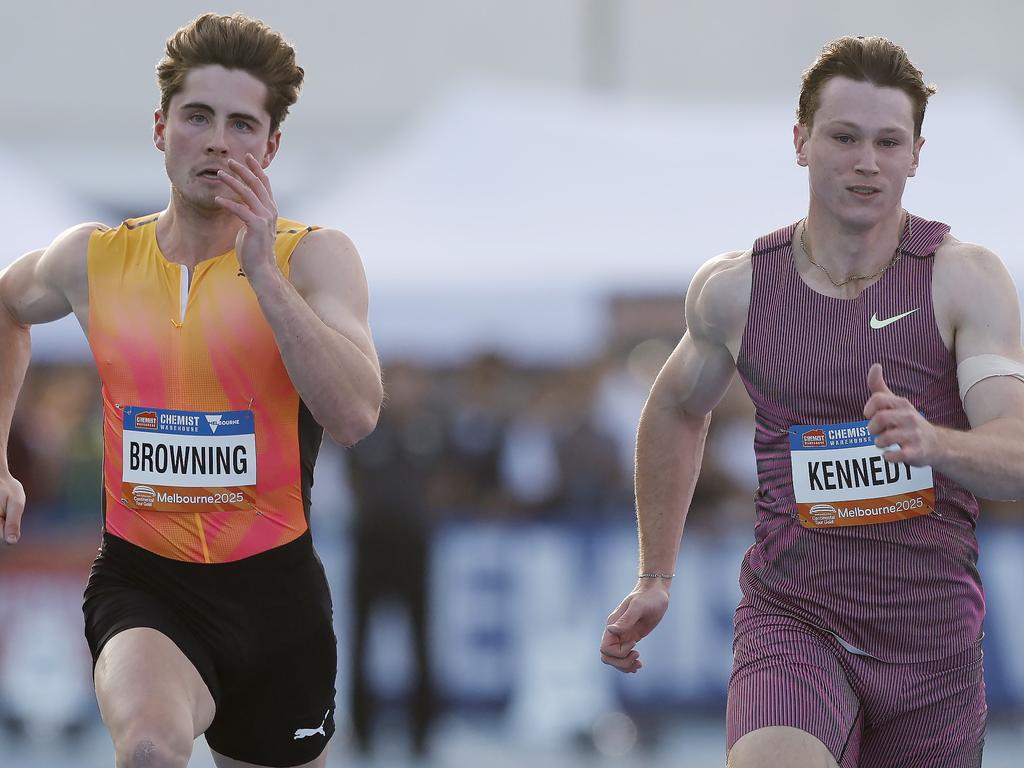Saving Football, Part I: Breaking down barriers to the world game’s grassroots explosion
Grassroots football is booming in Australia, particularly with women thanks to the Matildas. Yet in Part I of a special five-part series, ADAM PEACOCK is told by those on the ground about entrenched roadblocks facing the game.

Football
Don't miss out on the headlines from Football. Followed categories will be added to My News.
Beyond the atmosphere of perpetual crisis that pervades Australian football, something truly remarkable is taking place in parks and fields across Australia.
“The ‘Matildas Effect’ is real, especially in our area,” says former Matilda Cath Cannuli, who now works as technical director for the Southern Districts Association in Sydney’s south west.
“I’ve been across this space for over 10 years now. Back then, you could go out and ask who your favourite Matilda is and they’d say, ‘Who? What?’ Now, they are rattling off all the names. Kids are walking around in Kyra Cooney-Cross Arsenal jerseys.”
Canulli reports a rise of 50% in female numbers for the 2024 season. Boys and men continue to sign up too, but girls and women are running towards the game.
SAVING FOOTBALL: THE FULL SPECIAL REPORT
PART II: COUNTING THE COST OF A MIND-BENDING DEVELOPMENT SYSTEM
PART III: RESCUING THE A-LEAGUES FROM CRISIS AFTER FORTUNE BLOWN
PART IV: HEEDING HUGE NATIONAL TEAM WAKE-UP CALLS
PART V: AUSTRALIAN FOOTBALL'S ONLY PATH TO A BETTER FUTURE
PLUS: A-LEAGUE'S RAPID REBOOT, FROM FINANCIAL RUIN TO STARS GALORE
PLUS: A-LEAGUE NEXT GEN: TEEN SALAH CLONE, AUSTRALIA'S 'BEST DEFENDER'
Figures obtained by CODE Sports illustrate growth in every corner of Australia.
In Western Australia, Sam Kerr territory, player numbers are up nearly 30%, with female numbers up 43%. In NSW and Northern NSW, which combine for the biggest playing base, numbers are up 10-13% over all and 18-23% among females.
Victoria is up 18% overall and 30% with women and girls.
And in Queensland, where many current Matildas first kicked a ball, female participation numbers are up an incredible 44%.
Based on these figures, Football Australia’s participation report later this year will trumpet a participation figure that smashes through the two million mark across boys, girls, men and women.
Football Australia had an idea this was coming.
“The real legacy was how many children would play the sport post Women’s World Cup,” Football Australia chief executive James Johnson tells CODE Sports. “Now we’ve got more people playing the sport than ever before, we’ve got the strongest sporting brand in the country, the Matildas.”
The real challenge is ahead, though.
Johnson knows it, as do those on the ground.
“The biggest piece of the puzzle,” Cannuli says, “is about how we keep them in the game for longer. Not just playing, but reffing, coaching, admin.
“It’s so important that this growth is managed in a way to capitalise on it properly.”
So, where to start?
CODE Sports spoke to 20 grassroots clubs and associations in every part of Australia and asked the same question: “What is the one wish for your club?”
Eighteen of the 20 came back with the same answer: facilities.
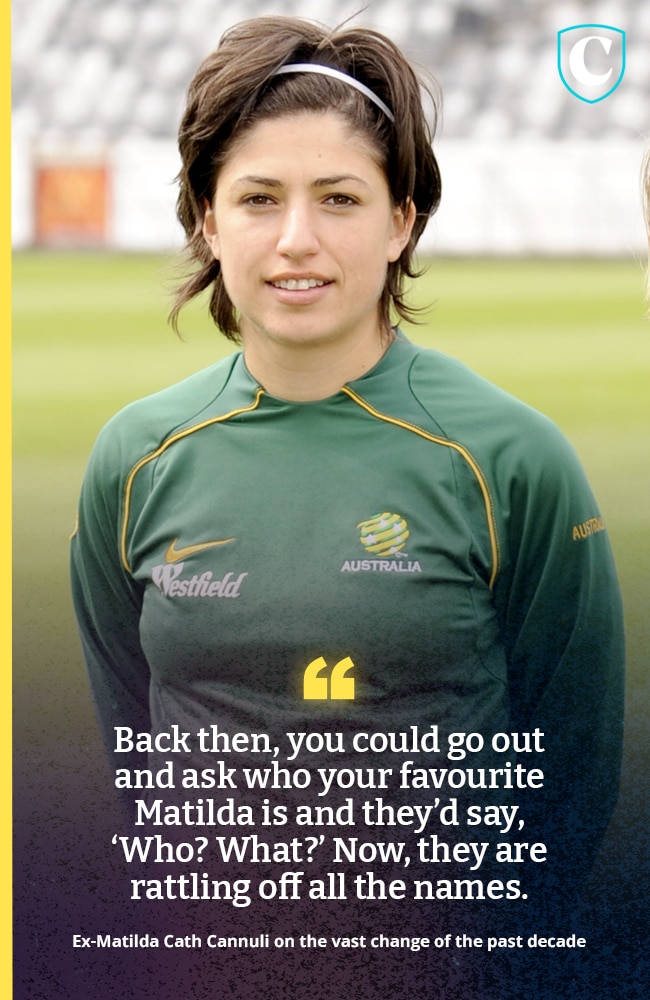
NO SPACE TO GROW
Alamein FC, based in Melbourne’s eastern suburbs, is a female-only club.
“Our players come to us because what we offer is very, very different,” Alamein president Kathy Stamatopoulos says. “Women in our club are not secondary, it is all about them.”
Alamein is home to five teams in the NPL (state competition). It has ambitions to double its size to accommodate those new to the game, but there is no physical room to grow.
Its ground, Dorothy Laver Reserve, is barely fit for purpose. No undercover seating. No fence line. No club rooms. And for the first half of 2024, the pitches themselves are out of play due to urgent drainage works.
The club plays home games nearly an hour away, at the Home of the Matildas, for a cost of $1,000.
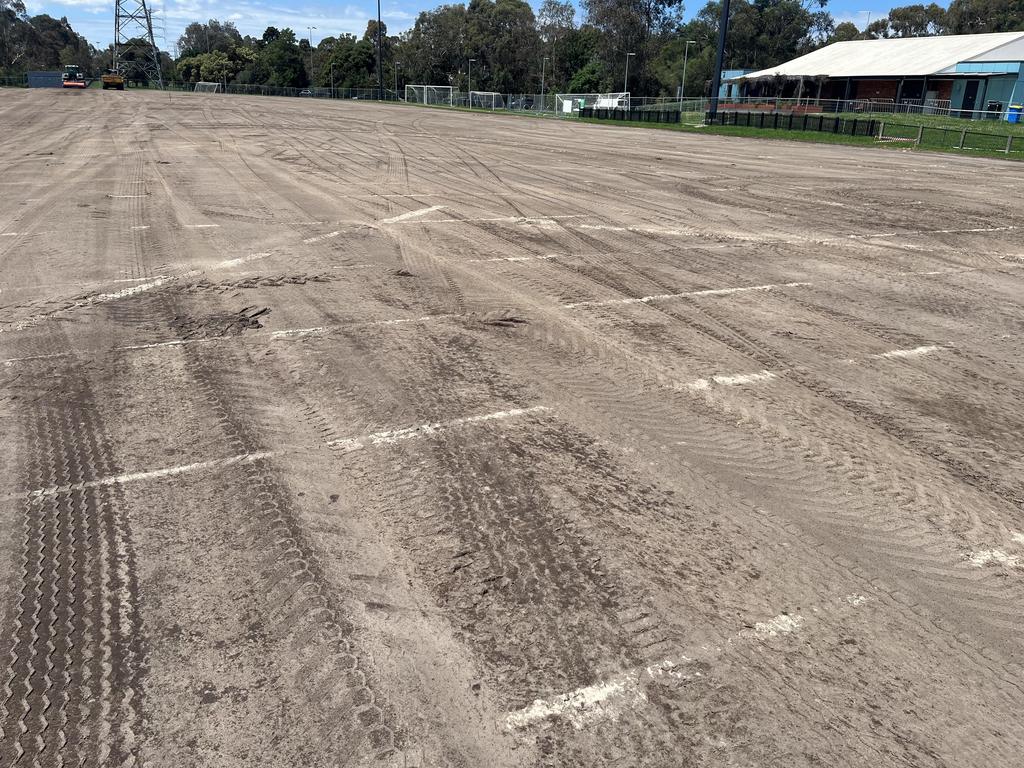
It could have been so different.
Last year, nearby Glenferrie Oval, the dilapidated former home of AFL club Hawthorn, became available with Boroondara Council inviting submissions to turn it into a modern sporting hub.
Alamein jumped at the chance, willing to share with other football clubs and add a female wellness centre, but had to scratch for support.
Football Victoria helped with the submission, but couldn’t commit anything financially. To help one club would mean they would have to help all and there’s not enough in the bank for that.
Alamein raised $500,000 from sponsor Bendigo Bank and sought other help.
“In the end we needed six councillors in our favour. We had five vote for us,” Stamatopoulos says. “It was a long shot.”
Glenferrie will be upgraded for Australian Rules and cricket use.
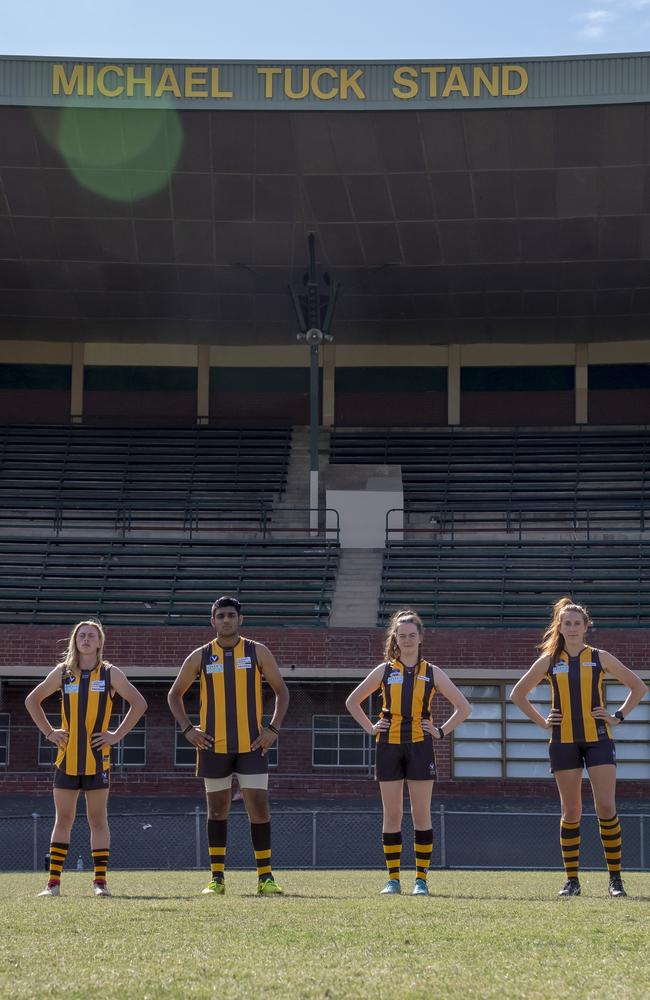
There is another opportunity for Alamein, who will now submit a claim for a grant through the Play Our Way scheme, a $200 million fund announced by prime minister Anthony Albanese at the height of Matildas World Cup mania last year.
On August 2, days after the Matildas thumped Canada to make the knockout stages, FA officials, along with FIFA President Gianni Infantino, gave jerseys and plaudits to the political elite, who themselves were buoyant in Matildas scarfs.
FA was targeting a funding grant from the federal government in the hundreds of millions for its legacy program, knowing 2024 would be a year of exponential grassroots growth.
On August 19, Albanese announced the $200 million Play Our Way fund.
“This is about making sure that the next generation of Sam Kerrs and Mackenzie Arnolds … get the infrastructure and facilities that they need,” Albanese said.
There was a catch. The Play Our Way program is for all sports.
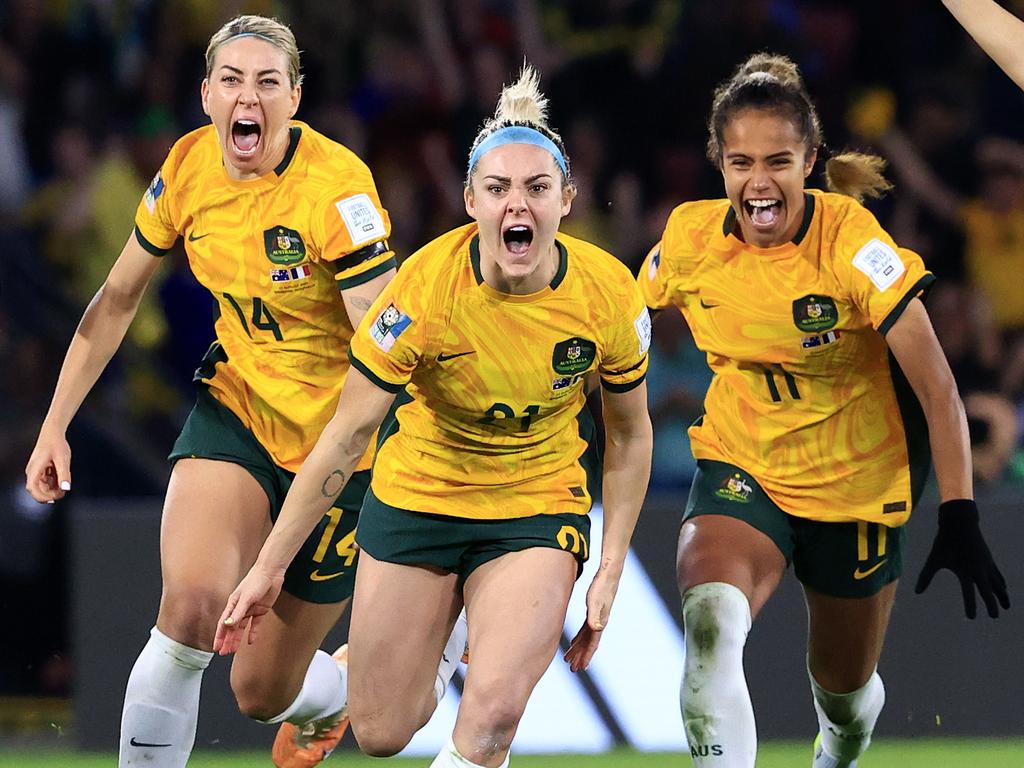
No one from football will go on the record about what happened in those two weeks, nor disparage other sports, particularly from the Olympic sphere, asking for help, but one source pointed to a particular shindig held in Canberra just after Infantino’s visit: the annual Parliamentary Friends of AFL event.
Numerous sports, including football, also have a Parliamentary Friends group used mainly for networking, but the timing of AFL’s 2023 event surprised few, with the code’s proven track record of strategic alignment throughout its sport.
Back at Alamein, Stamatopoulos has put in her club’s Play Our Way funding request for undercover seating, a proper fence line, and new club rooms at Dorothy Laver Reserve.
Alamein may be forced to move if the ground isn’t upgraded.
“It’s our strategy to enable more women and girls to play the game they love,” Stamatopoulos says. “Everything we generate from a revenue perspective is reinvested back into our players.”
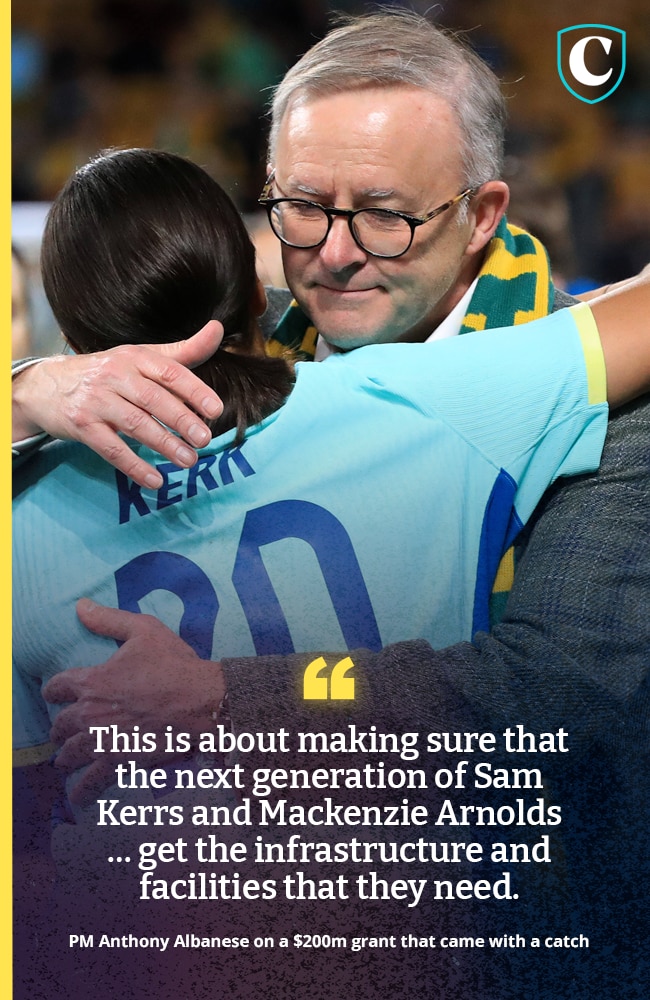
TURNING PLAYERS AWAY
All across the country, local football clubs are using the Matildas success as a catalyst to ask for what they deem to be fair.
In Tasmania, Taroona FC needs new lights at its home ground.
“Lights give us options that we can use for the seven-year-old kid, or over age 35s, otherwise we can’t train as much as we’d like to,” Taroona president Sam Johnson says.
“It’s challenging because it’s not cheap or sexy. I do feel like there are small pockets politically listening, but there’s not enough to go around.”
Elsewhere, getting on the grass can be an issue.
“Access to facilities is the big one for us,” says Josh Eggleton, president of Toukley Gorokan FC on the NSW Central Coast.
Eggleton’s club has 51 teams, but only eight hours per week are granted by the council for training on Toukley’s two allotted pitches.
“We wanted to set up an academy this year,” he says. “To give more training to the better kids in each age group, but one of the problems was finding time to get them on.”
This writer, based on Sydney’s northern beaches, has seen council rangers on local grounds checking if people having a kick are associated with a club and using grounds without permission.
The squeeze on space has meant many of the 20 clubs and associations contacted by CODE Sports have had to turn players away.
“We have 1,000 players and a wait list of 500,” says Matt Galea of Essendon Royals in Melbourne.
And like Alamein across town, Essendon would love space to grow or have its current fields upgraded.
“But,” laments Galea, “there’s always a reason it doesn’t get done.”
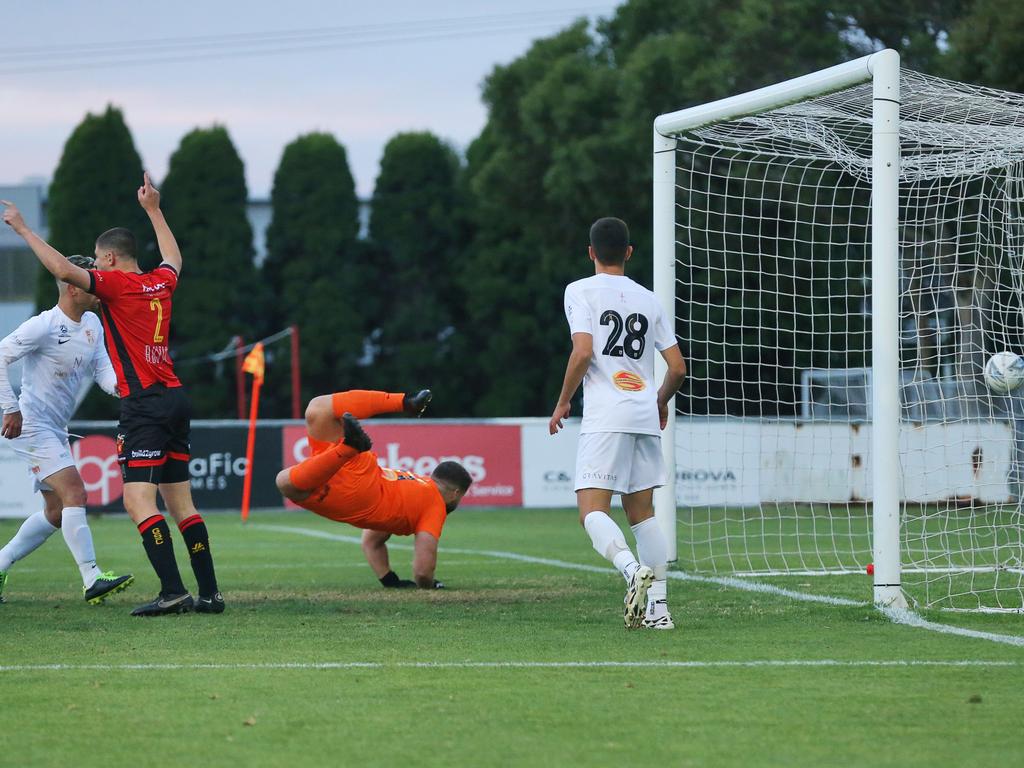
MANY VOICES, MANY NEEDS
Politicians, be it local, state or federal, have long been confused by football’s own multi-layered structure. Grassroots, state federations, Football Australia, and A-Leagues clubs all have their hands out.
Federal ministers have told this writer of examples when three separate people from FA pleaded for help in three different areas of the game.
Communication between the tiers is convoluted.
“We mostly have no idea what the FA and APL are doing, and every time we ask, it’s like going into a hedge maze,” a state federation official says.
Many in football blame the sport’s federated model, where the state member federations hold enormous sway, as an anchor. Johnson, however, bristles at the notion that a federated model – described by Kieren Perkins at the recent SportNXT conference as a governance system that “guarantees obstruction and oblivion” – is what is holding football back.
“The facts over the past two or three years say that it doesn’t,” Johnson says, pointing to Football Australia’s deals with CommBank (Matildas), Subway (Socceroos) and Coles (junior football). “The commercial interest is there and the governance structure has helped bring those deals in.”
In any case, Football Australia’s federated model won’t change. The nine state member federations control 55% of the votes when it comes to changing the constitution. And turkeys don’t vote for Christmas.
As for the future, the allocation of the $200 million Play Our Way grant will be instructive in determining where football stands. Clubs and associations are making their own submissions. Football Australia is handling the top end lobbying.
Whether football will ultimately improve its current facilities shortage remains the great unknown.
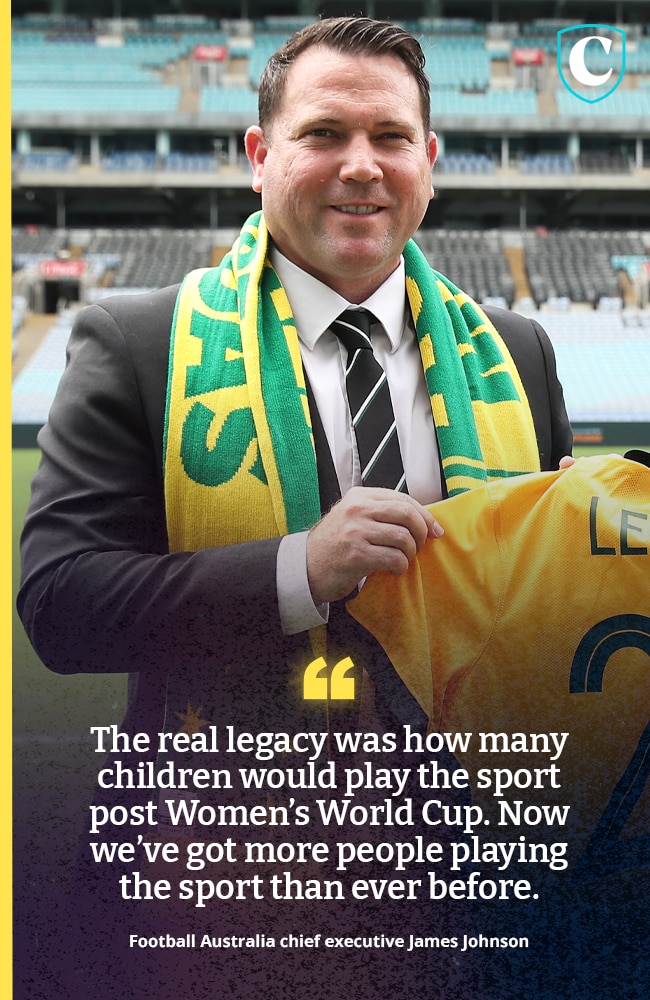
WHERE ARE THE COACHES?
Facilities may well be the main issue for grassroots football but others require attention, too.
While playing numbers increase, volunteer numbers decline.
Refereeing ranks are going through a year of churn; abuse the main factor.
And an often-forgotten aspect of having so many players must be addressed: Who will teach them? There is no shortage of coaching courses available, from grassroots level to professional, with a sliding scale up in cost ranging from $50 to $20,000.
At a local level, the bottom end of that scale, finding those with an intrinsic knowledge of football is key.
“We would love more assistance with coaching,“ says Jim Tsouvalas of Adelaide Comets, who have added 150 players to their ranks in 2024. “Finding the right coaches for the right age groups, to help them develop, is a big focus.”
Adds Cannuli: “If you have a good experience, you’ll come back the following year.
“(At Southern Districts in Sydney) we put on information sessions for all coaches, especially targeting that under 10s to 12’s area. It’s a lot of parents, and we want to help those people, nurture them and give them a better experience as coaches.”
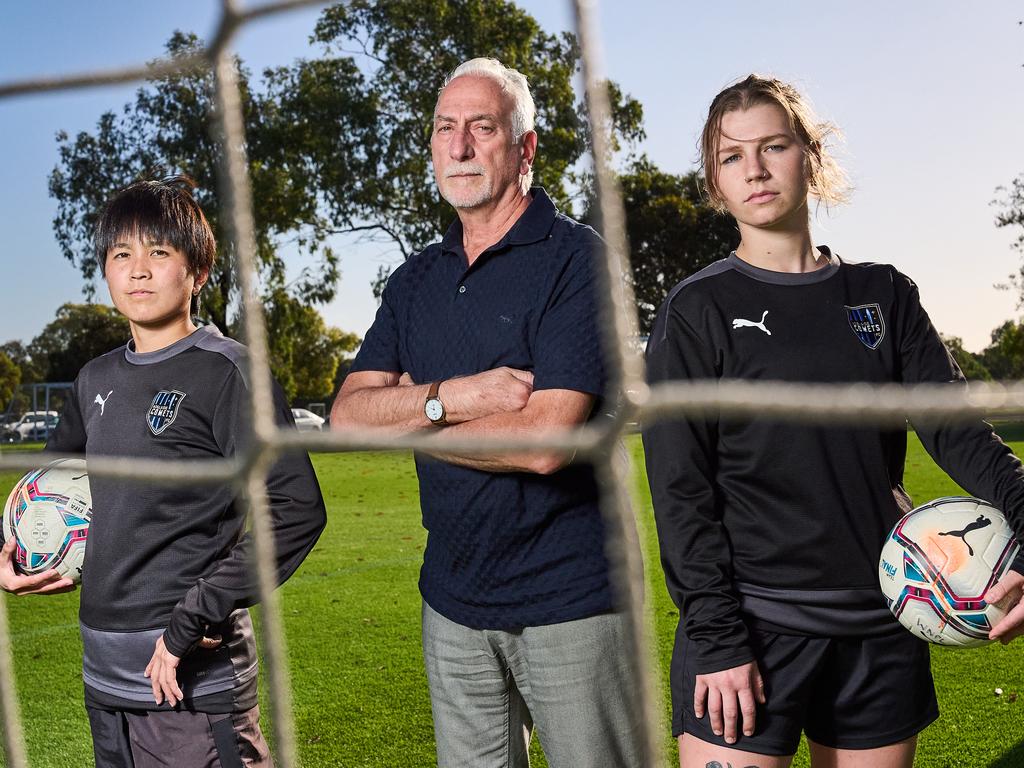
Despite the capacity issues, and sheer volume, games go on.
From whimsical four year-olds to retirees with wobbly knees, the grassroots game, the bedrock of football in Australia, is surging.
“We chuck on some free food each week for one of our teams, chosen randomly,” says Ivan Garbin of Carramar FC in Perth. “Just so they feel part of the joint. After all, it’s a place to enjoy yourself.”
This year will not be an outlier when it comes to participation growth.
Australia will host the 2026 women’s Asian Cup.
The ‘Matildas Effect’ will turn a new page.
But for how long?
Producing the next crop, nurturing future Socceroos and Matildas through the A-Leagues, is proving quite the challenge.
While the base of the pyramid is rock solid, the further you go up in Australian football, the more chance of doomsday; a sentiment best summed up by John Auld from Peninsula Power, just north of Brisbane, another club with immense grassroots growth in 2024.
“Stand in winter at the local park and it would give you some idea we’re a world powerhouse in this game,” Auld tells CODE Sports.
“And then it gets to 18, and it dead-set turns to shit.”
‘Saving Football’ is a five-part investigation into the state of Australian football amid a critical period for the game. Authored by respected writer, broadcaster and commentator Adam Peacock, the series delves into the issues and solutions for football at every level.










